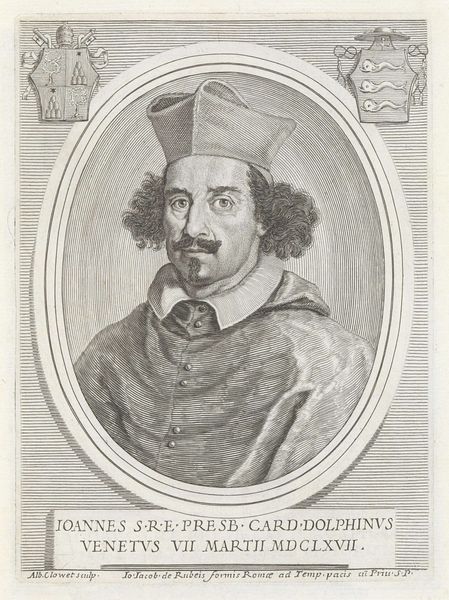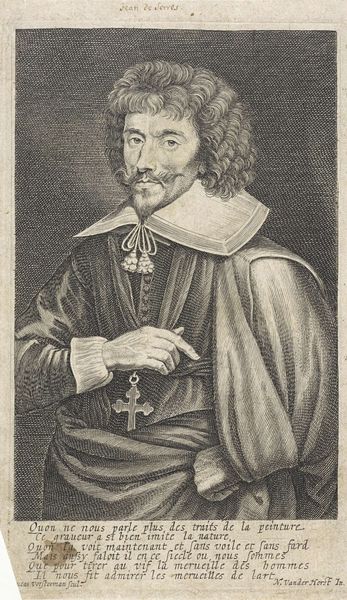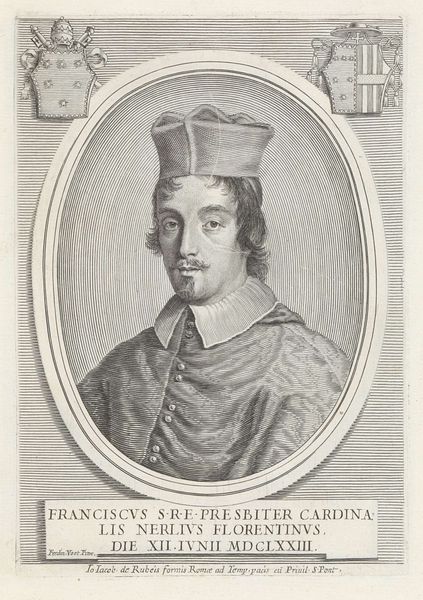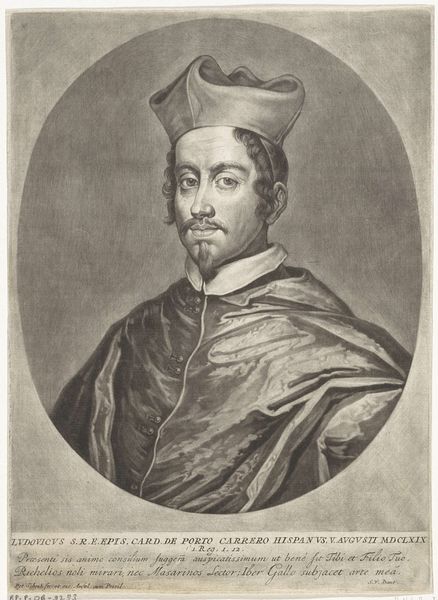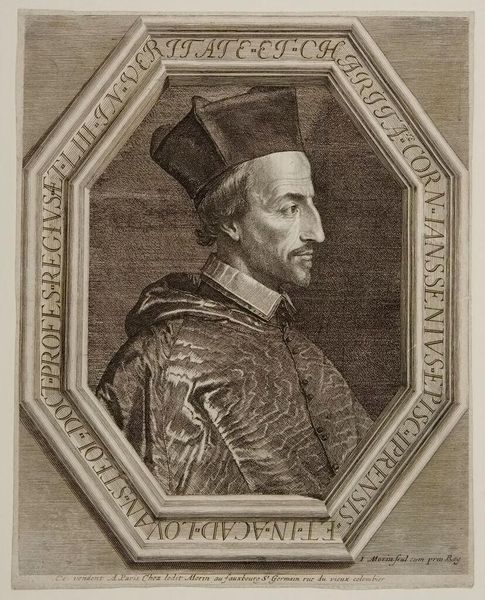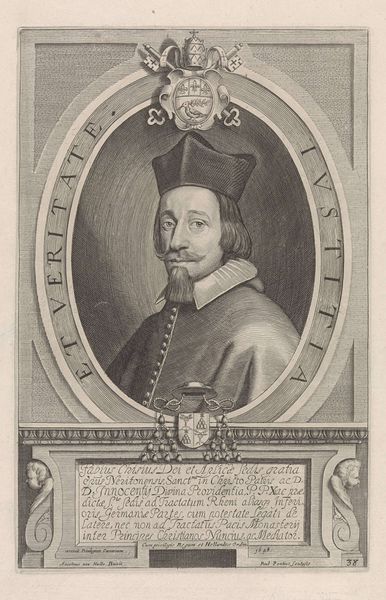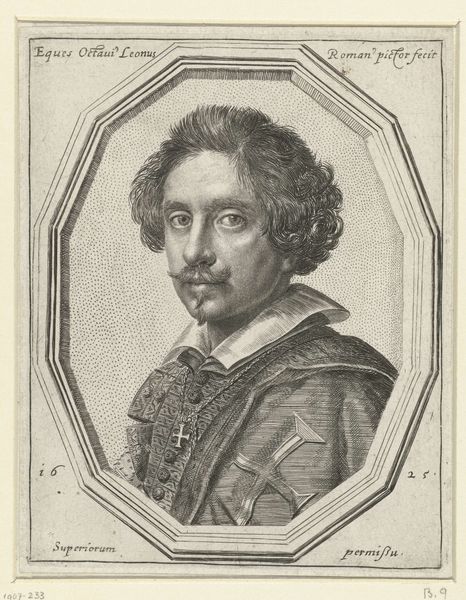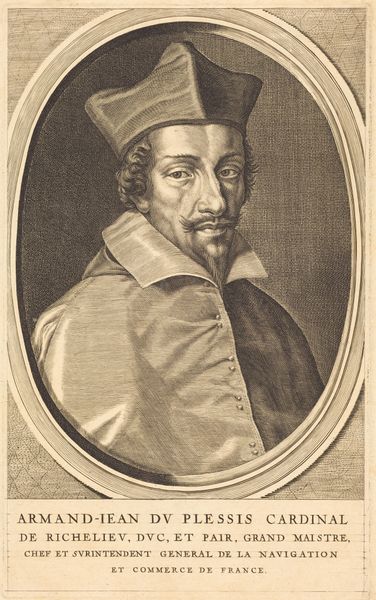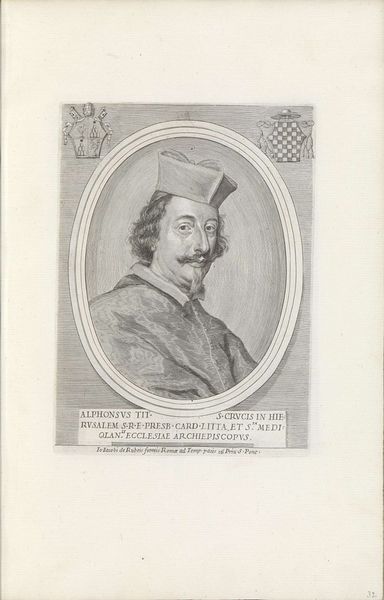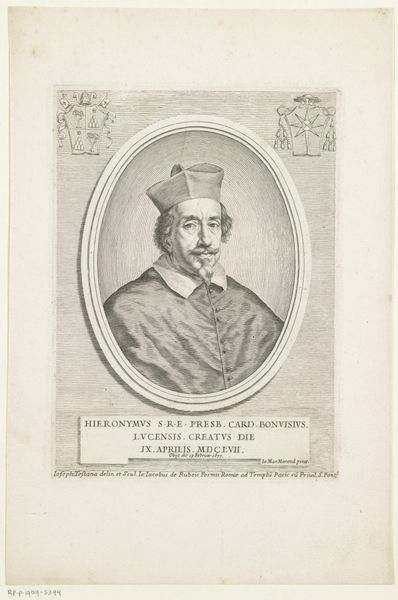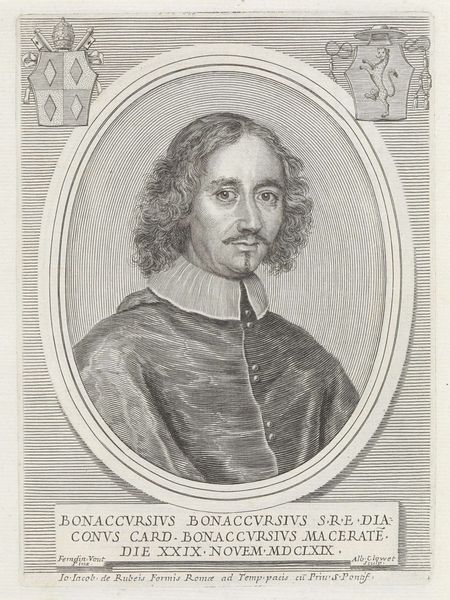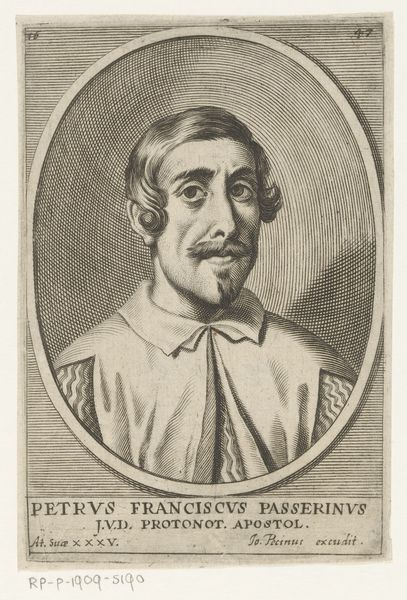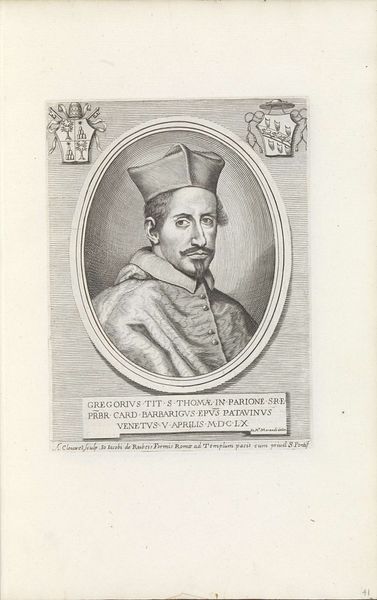
Dimensions: height 192 mm, width 140 mm
Copyright: Rijks Museum: Open Domain
Curator: Take a look at this remarkable print. It’s a portrait of Cardinal Neri Corsini, dating back to sometime between 1664 and 1909. It’s an engraving created by V. Guigou. What strikes you about it? Editor: Well, first off, he looks a little… stern, doesn't he? Almost like he caught you sneaking a cookie before dinner. The lines are so precise, it feels like every hair, every crease in his robe, is making a statement. It's austere, yet there's a weird elegance. Curator: Precisely. The portrait situates Cardinal Corsini within a very specific social and political context. Consider the visual language of power – the elaborate robe, the hat signifying his high ecclesiastical rank, the family crests above. It speaks volumes about the Cardinal's identity and his place in the hierarchy. Editor: Yeah, it’s all about status, isn’t it? But, stripping away all the finery, there's still a human being there. I see a vulnerability in his eyes, almost like he's weary of all the pomp and circumstance. Am I projecting? Curator: Not necessarily. While the artist aims to convey authority, the portrait also inadvertently offers a glimpse into the individual. Think about the conventions of portraiture during that era and the restrictions artists faced. Finding humanity within those confines becomes a fascinating challenge, reflecting complex intersections of power and representation. Editor: I get that. And the limited contrast...it's kind of mesmerizing. It's like the artist is subtly pushing against the rigidness of the line, inviting us to look closer and consider the softer aspects. It feels almost like a secret. Curator: The engraving technique allows for incredible detail, yet it also emphasizes a certain distance. The portrait becomes an object of historical inquiry, prompting questions about the Cardinal's role during that time, his influence, and his legacy. What does it mean to capture someone’s likeness across centuries? How do our contemporary perspectives shape our understanding of their story? Editor: Hmm. Maybe the artist wasn't just immortalizing a Cardinal; perhaps they were posing a question about what truly matters when we're all reduced to lines and stories on aged paper. That makes me want to know even more. Curator: Indeed, the artwork invites ongoing reflection on history, identity, and the power of visual representation. Editor: For me, it is also an evocative exploration into the many subtleties behind historical appearances.
Comments
No comments
Be the first to comment and join the conversation on the ultimate creative platform.
